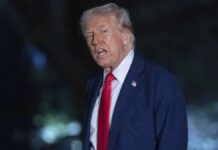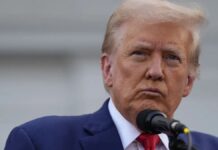
Within a week of the first COVID-19 case in Michigan, my practice had fully transitioned to telehealth. I went from putting my hands on patients to seeing them from my kitchen on my iPad.
The first few days were busy with patients who had flu-like symptoms and those facing grave anxiety. By the third day, I felt the need for a new medical diagnostic code: Misinformation. (Diagnostic codes are a combination of letters or numbers used to identify disease and reasons for patient encounters, for the purpose of medical charting, billing and research.)
Many false claims are circulating about the virus, which leads to harmful consequences to patients. Patients are panicked and confused, and in some cases this is leading them to do things like ingesting harsh chemicals or overdosing on herbal treatments. Because there is not a dedicated diagnostic code for misinformation, many physicians don’t see it as a primary focus for a patient visit and are not motivated to get further training about it.
COVID-19 has changed that narrative as physicians are getting bombarded with questions grounded in misinformation and they are ill-prepared to handle it. A diagnostic code for misinformation related to COVID-19 would give patients dedicated appointments to address their questions, allot reimbursement to providers for time spent dispelling that misinformation, and encourage training to better guide patients about the virus.
Medical misinformation is nothing new — it has been a constant problem adversely affecting people’s health. However, COVID-19 medical misinformation is even more dangerous because of its immediate consequences, such as causing people to ignore social distancing and wearing face masks, thus putting others at risk. Misinformation also is causing panic, anger, polarization between political parties, sickness and even death.
Patients rightfully have many questions. But COVID-19 is different from most diseases; being a novel virus, the research available is still largely inconclusive and the answers are often unknown. People are also scrambling to find reliable information because national public health leaders and government agencies like the Centers for Disease Control and Prevention have been marginalized by government leaders.
The simple guideline of wearing a mask has been politicized, resulting in division in the general public about the best practice. Unlike every other health crisis in memory, the consequences are that states, cities and even individuals are left to fend for themselves amid the confusion. If there were more political support for public health science, the vast spread of this virus may have been avoided.
As a primary care physician, I do myth-busting during nearly 90% percent of my video visits; about 80% of my patients’ have scheduled appointments just for information on COVID-19. Rather than diagnosing and treating, my work has evolved into directing patients to credible resources like the CDC and the World Health Organization’s mythbuster page. Still, patients wanted to get the facts from me, a physician on the front lines. They asked questions like, “Doctor, I read that vitamin D, zinc and vitamin C will kill the virus. I’ve been taking double the recommended dose. Do I still need to wear a mask?” I guide patients to look at an article’s date, the author’s background and show them how to search to see if a conclusion appears consistently in various reliable sources. Essentially, I try to teach them how to sort through misinformation, a skill that now has a direct impact on their health outcomes.
The questions followed me into the inpatient COVID-19 unit. “Will they save me, doctor?” one 65-year-old asked. “I read online that they are only saving young people.” He was very worried he would be denied lifesaving treatment due to his age. Another patient asked why people were dying if hydroxychloroquine, a malaria drug, was available, approved and even endorsed by the president. I explained there was still a lot of controversy about this drug as it continues to be studied. The patient was shocked, as he understood the word “approved” to be synonymous for “COVID-19 cure.”
People are skeptical about political, business and media agendas, and are seeking information from their trusted providers. But challenges in sifting through misinformation is plaguing providers as well. Many physicians who don’t have backgrounds in social media or training in fact-checking are turning into social media stars. This is a new area in medicine that needs to be embraced by the medical community. The public is craving information from their doctors on media platforms; therefore, public health media messaging should be an essential part of medical education. Medical media courses on how to utilize videos, how to cite information and avoid misinformation could be developed by media, public health and fact-checking experts to better guide physicians in the delivery of accurate information on physician platforms.
Advocacy from primary care organizations and other interest groups such as the American Medical Association would be needed for a misinformation diagnostic code to be implemented. In addition, the Centers for Medicare and Medicaid Services and the National Center for Health Statistics would have to arrange criteria around the diagnostic code. The diagnostic code could also serve as a way to do further research and track misinformation.
However, to use a diagnostic code, training for providers on how to manage misinformation is crucial, especially as more medical professionals jump online to help guide the public and combat misinformation. Medical education currently doesn’t include courses on misinformation as a mandatory part of the core curriculum. The vast medical community has shunned media physicians as stars with no credibility rather than embracing the opportunity as a new way to empower the public. This training could provide physicians an avenue to present themselves online without losing trust and respect from their colleagues due to a lack of fact-checking.
Physicians are taught how to read and interpret medical research journals throughout their careers; it’s time to include media and misinformation as well. I chose to take a program in media and medicine offered at Harvard Medical School, but it was difficult for me to find such a course. For physicians currently in practice, education on misinformation and media training to maintain licensure and certifications could be a first step for those wanting to use the misinformation diagnostic code. In addition, continuing medical education should be available.
My Hippocratic oath is “do no harm.” Misinformation is adversely affecting people’s health and is a growing challenge for practitioners. It’s another war we are fighting in addition to the virus itself. With weekly webinars on COVID-19, clinical trial reviews and health system updates, physicians are staying informed. This could be taken even further by including education from public health officials and fact-checking experts on misinformation.
We need to give more front-line providers a platform to interface with the public to help provide accurate information on COVID-19. Allowing a medical diagnostic code for misinformation could encourage patients to make appointments with their primary care physician to learn the skill of sorting through medical misinformation. If physicians were properly trained, they could be a valuable tool to combat misinformation. We owe it to our patients and our community — and what better platform than an office visit with a trusted provider?











